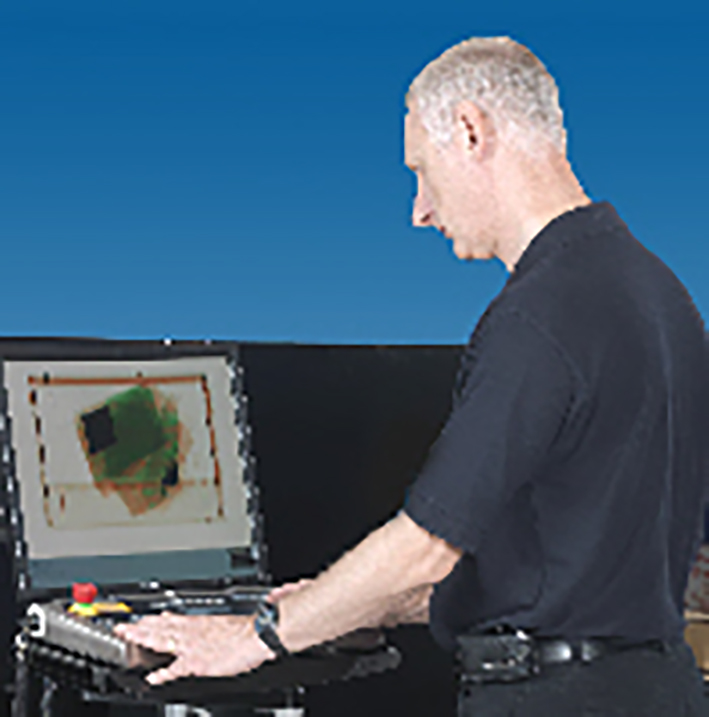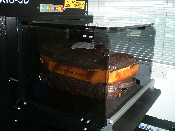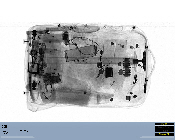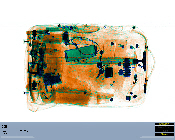
Human factors in x-ray scanning
15 July 2010
Nick Fox, CTO at 3DX-RAY, examines how x-ray screening systems can be designed to improve operator performance.
Operator fatigue and performance is a major issue with x-ray scanning, the consequences of poor performance can potentially be extremely serious. Staffing can also be an issue. New operatives need to be trained and it takes time to acquire adequate competency. This can cause problems where there is a high staff turnover, as in the USA. There are however ways in which the screening equipment itself can help to minimise the impact of operator fatigue and staff turnover, to improve performance and the results. Scanning machines can be made easier to use and images can be made easier to analyse, helping to deliver more reliable results.
The basic assumption in baggage screening, especially with hand baggage in an airport environment, is that there will be an operator involved at some stage. A common assertion is that automation of this process could completely cut out the ‘human error’ associated with manual screening. However, high false alarm rates occur with automated systems and scans then need to be referred back to human operators, even within an ‘automated’ baggage screening system. In addition to this, hand baggage doesn’t naturally lend itself to automated screening. With hand luggage you can be looking for explosives, biological threats, knives, guns, parts of guns and even other components that can be put together to become a threat. As such, vigilant operators are required to spot these items. With checked luggage however, you are generally only looking for explosives, which is therefore easier to automate.

There remains the issue of throughput and maintaining a flow of people through security checks. Operators have around six seconds to examine each bag, so it is crucial that the operator is presented with the best possible image first time, to minimise the number of manual image processing functions that need to be performed. Ideally images will be subject to some level of automated image processing to identify potential threats, and the operator will be alerted to the findings. However, if the operator is presented with the automatic findings first they likely to focus on the automated systems findings rather than looking for other potential threats. If an automated system performs the scan in the first instance, the natural psychological response of operators is often to assume that a bag must be clear, rather than that the computer might be wrong. So, it is essential that the operator does the first pass over the image, then a secondary automated system can then re-analyse the scan and flag up any areas which need another human check.
However, providing the operator with the ‘best image first time’ is an extremely complex and challenging problem. For instance, a bag of electronic equipment will require an entirely different set of image processes compared to a bag of clothes or other organic materials. To resolve this challenge, an algorithm can be applied to the scan in order to quickly establish broadly what materials are within a bag and to apply the relevant image processing. This helps to make the scan as clear as possible for the operator. The ability to scan in 3D is also a great tool at this stage, it involves no extra processing, but makes it far easier for operators to identify objects and detect threats. X-rays are inherently unnatural images to view, which makes it difficult to identify objects at first. As such, anything that can be done to make the images look more ‘ real’, the better detection rates will be.
Using 3D images also helps to speed-up new operator training, as they will reach the required performance levels more quickly. Moreover, even after screening, some bags will still need to be physically searched, 3D helps speed this process up. A 2D image will only tell you where in a bag a potential threat lies in terms of left, right, centre etc, whereas a 3D image can be more specific, i.e. ‘its in the top left corner’.


The functions available to operators on the keyboards connected to the scanners, which allow further analysis of the image are also of importance. Being able to zoom into an area, reverse the colours contrast, look at the image from the back anddiscriminate between different types of materials, can help to decipher a very complex image. The number of buttons, and the functions associated with them, can have a real impact on the amount of time it takes to effectively assess a bag or item. To reiterate, operators only have around six seconds to assess each bag, so how many processes they have access to must be controlled. 3DX-RAY provides a limited number of functions to the operator, but it is a powerful selection. We researched the most effective functions thoroughly; in fact we actually visited many airports and other locations with x-ray scanning installations to see which buttons on the scanners were most worn!
Another way in which to minimise the influence of human factors and of operator fatigue in particular, is to incorporate a Threat Image Projection (TIP) system. This helps to ensure that operators are being vigilant and are looking for the right things. An image of a bag containing a threat can be seamlessly incorporated into the standard screening process and the operator is required to flag it up. If the operator detects the threat, vigilance and efficacy is proven, but if the operator misses the threat then he or she may require more training. This also helps with assessing ‘time to competency’ i.e. how quickly an operator can be ready to move into an actual scanning situation.
Human factors are the constant backbone of all x-ray work and their importance should not be underestimated. Improving threat detection rates whilst minimising disruption is increasingly critical with terrorism becoming a fact of life. As we have seen there are already many innovative strategies in place to improve the usability of scanning machines and therefore minimise the chances of a threat going undetected and these can make a real difference. This area of x-ray scanning is constantly evolving however, and we will see many other innovative approaches used to improve operator performance in the future.

